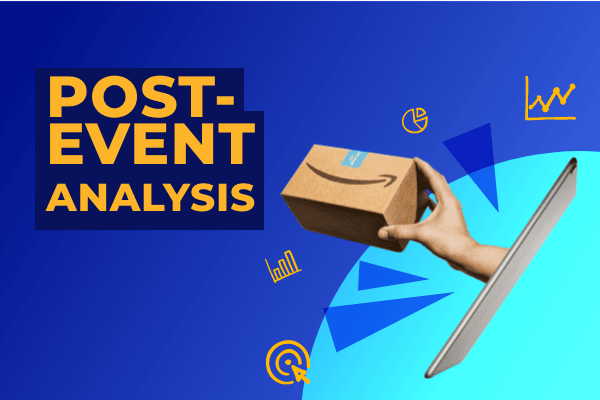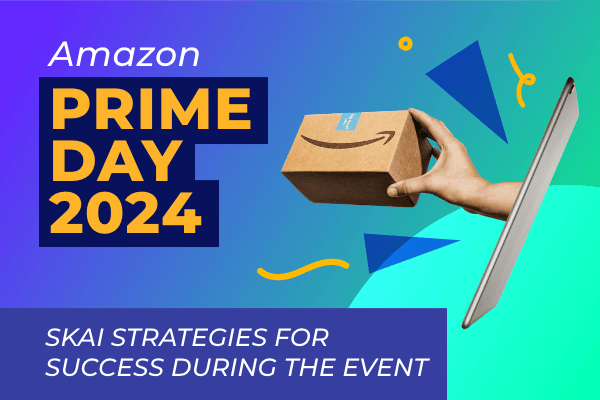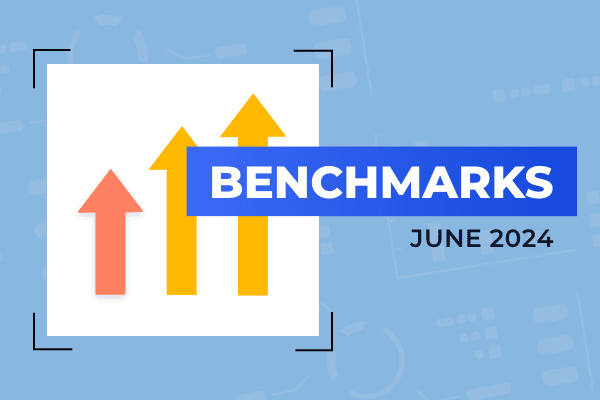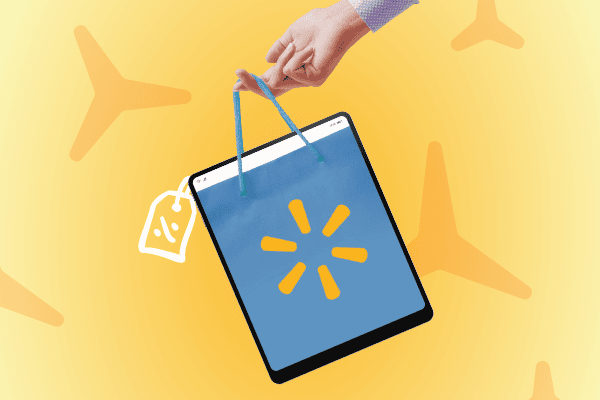Summary
Instacart Ads offers a powerful platform for brands to engage with consumers at the crucial point of purchase, utilizing a data-driven, Pay-Per-Click model to highlight sponsored products and shoppable ads. Reaching 95% of North American households, Instacart Ads’ targeted advertising capabilities make it a key player for brands seeking to navigate and succeed in the evolving digital grocery space. This piece delves into the strategic advantages of leveraging Instacart for personalized, impactful marketing.
Who would have thought that the fundamental way we’ve shopped for groceries and other common goods for decades would undergo a major transformation so quickly? Grocery marketers must also evolve their plans to capture consumer attention by following them to their preferred platforms. Today, that means retail media advertising such as Instacart Ads.
Instacart, founded a little over a decade ago, is now a recognized household name. Today, Instacart is available to 95% of households in North America. Its user-friendly grocery delivery service continues to win over consumers, establishing a new norm in grocery shopping.
Instacart Ads, its retail media network (RMN), introduces a world of opportunity for brands through its performance-based, PPC (Pay-Per-Click) advertising model, enabling the promotion of sponsored products ads right at the point of purchase. Constant enhancements to its self-serve ad platform and sophisticated data-driven targeting have set the stage for retailers and brands to not just participate but thrive in the digital grocery landscape.
In today’s post, learn more about Instacart Ads and how it can transform your brand’s digital presence.
How do Instacart Ads work?
For advertisers, Instacart marketing provides a unique opportunity to connect with high-intent audiences by creating discovery moments at every stage of the buyer’s journey. Instacart users are actively looking to make immediate purchases, providing the platform with a wealth of highly useful first-party data based on previous purchases and categories of interest.
In March 2020, Instacart unveiled Ads Manager, its user-friendly self-service platform that empowers brands featured in Instacart-serviced stores to showcase their products to online grocery customers. The self-serve platform offers a straightforward interface with a dashboard that enables advertisers to craft ads, monitor campaign performance, and fine-tune their strategies based on real-time data. You can also manage Instacart Ads from third-party platform partners like Skai.
Instacart sponsored product ads rely on keyword bidding, akin to the approach seen on platforms like Google and Amazon, and are sold on a CPC (cost-per-click) basis. These ads can appear at every stage of a shopper’s journey, from search to checkout, and can even appear after shoppers have completed related purchases in the “Your Items” section. Advertisers can also offer coupons and run promotions within the Instacart ecosystem. Recently, Instacart has heavily invested in shoppable ads, including display and video. Brand pages are another ad product that can help brands stand out. They also provide a landing page to draw off-site shoppers to their inventory of products available through Instacart.
In the past, Instacart marketing has been limited to pre-packaged grocery items. But as the company grows, so do possibilities for Instacart advertising. Not only does the platform now give advertisers the option of promoting random-weight produce items, like tomatoes or bananas, but shoppers can find items well beyond the purview of the grocery store. Instacart partners with brands like PetCo, Sephora, and many others, serving as a one-stop shopping hub where users can discover new favorites and easily find reliable staples.
Why are Instacart Ads important to digital marketers?
It’s no secret that retail media is currently booming. According to Skai’s State of Retail Media report, 40% of marketers are spending around 36% of their overall budgets on retail media. And for good reason! Of those surveyed, 96% say that their retail media efforts are achieving the desired effect.
However, as more marketers flock to retail media, standing out has become challenging, especially within giant platforms like Amazon and Walmart, the two biggest retail media publishers, where just about every CPG invests heavily. As these two retail media networks boom, competition for top spots in search results has become fierce, and many marketers find that their ads are both more expensive and less effective than they have been in previous years.
That’s where RMNs like Instacart come in. Instacart boasts a network of 85,000 retail stores that helps millions of customers locate goods across 14,000 cities across the U.S. and Canada. While interest in Instacart is growing, there is still plenty of room for brands to claim a share of voice within the platform.
Besides the appeal of its relative cost-effectiveness, Instacart marketing also provides advertisers with a wealth of insight into audiences and purchase intent. As third-party data becomes increasingly less viable for advertisers, first-party data that provides a glimpse into audience preferences has become critical for personalized marketing. Instacart is constantly improving targeting capabilities to provide value to marketers and audiences alike.
As marketers continue to look for meaningful opportunities to connect with audiences who value both privacy and personalization, Instacart marketing offers data-driven solutions for keeping brands top-of-mind at all stages of the buyer’s journey, from discovery to post-purchase.
Instacart Ads formats
Instacart offers a variety of ad products designed to meet different marketing objectives, including driving sales, engaging consumers, and expanding reach. Their suite of products includes sponsored product ads, promotions, pages, shoppable display ads, display ads, and shoppable video ads. Each product is tailored to help brands capture high-intent users, enhance product visibility, and effectively tell their story to consumers, facilitating discovery and encouraging purchases.
Here’s more on these innovative ad formats.

Sponsored product ads operate on a CPC basis. After winning a keyword bid, your product will secure a prominent position in the first three slots of relevant search results, appear while shoppers browse relevant departments, or appear as a post-purchase recommendation. These sponsored products closely resemble organic search results, except for a small “sponsored” tag.
One notable feature of Instacart ads is the ability to run promotions. Advertisers can offer coupons or “stock up and save” deals that feature discounts for shoppers who purchase multiple units of a product. These promotions appear on item cards, making it easy for shoppers to discover savings as they browse. Additionally, shoppers receive a call to action at checkout as a final nudge to redeem promotions.
Instacart’s Pages are available for free to all advertisers and can be created within the Ads Manager platform. They serve as a personalized canvas to provide an overview of the brand, guide shoppers to best-selling products, and spotlight new offerings. Pages also function as a landing spot for off-site shoppers, helping to introduce new customers to your brand.
Display Ads are visually appealing banners that appear at the top of a page and act as an interactive introduction to your brand. They are designed to boost engagement, re-engage existing audiences, and connect with new customers.
Shoppable Display Ads are interactive banners that enable brands to promote a selection of products within a single ad. Use these throughout the Instacart app to drive awareness and consideration of your products.
Shoppable Video Ads: Similar to shoppable display ads, shoppable video ads immerse shoppers in an interactive brand experience. These ads feature a brief video showcasing multiple products that viewers can purchase directly from the ad, streamlining the path from discovery to purchase.
How you might use Instacart Ads across the customer journey
Instacart Ads offers formats that can engage with customers at every stage of their shopping journey. From driving immediate sales to building long-term brand awareness, here’s how you might plan a media mix to effectively reach and convert your audience across different phases of their buying process, ensuring a cohesive and impactful advertising strategy on the Instacart platform.
To drive sales
Instacart’s Sponsored Product Ads and Promotions are engineered to position your offerings prominently at times when consumers are most likely to make purchasing decisions. These ads are about visibility and strategically offering incentives, such as discounts or bundle deals, that can turn a casual browser into a buyer.
This strategy is particularly effective on a platform like Instacart, where decisions are made quickly and convenience is valued. By closely monitoring campaign performance and adjusting strategies accordingly, brands can significantly increase their conversion rates, making every dollar spent on advertising more effective.
To engage consumers
Engaging consumers on Instacart is made impactful through the use of Shoppable Display and Video Ads. These formats offer more than just a visual showcase; they invite interaction, allowing users to add products to their carts with minimal effort.
The key to success with these ad types lies in crafting compelling content that tells a story or highlights a product’s unique features, making the shopping experience both informative and enjoyable. As consumers increasingly look for easy and quick shopping solutions, these interactive ads serve as a bridge, connecting them directly with products they’re interested in and enhancing the overall user experience on the platform.
To expand reach
When it comes to expanding reach, Display Ads on Instacart are a powerful tool for increasing brand awareness and attracting new customers. These ads, effectively placed in prominent locations throughout the Instacart platform, act as digital billboards that can capture the attention of a wide audience.
Successful Display Ads combine striking visuals with clear messaging, making it easier for potential customers to understand what your brand offers at a glance. This approach not only helps in capturing new markets but also reinforces your brand’s presence among existing customers, creating multiple touchpoints within the Instacart ecosystem.
What are the benefits of Instacart Advertising?
Following a remarkable surge in 2020, Instacart is the indisputable leader in grocery delivery.
Here are three of the biggest benefits of Instacart advertising:
Share of Voice: Given Instacart’s dominance in the grocery delivery sector, it’s highly likely that your competitors are already advertising with Instacart. Establishing a presence within the Instacart advertising ecosystem is vital to remain competitive in the ever-evolving retail media landscape.
ROI: Most marketers understand the importance of optimizing Amazon’s retail media network. However, winning bids for top keywords can be difficult as the platform becomes saturated with competition. Keywords that spike high on larger networks may often still be reasonably priced with Instacart and drive up your return on investment.
Keyword Discovery: Winning keyword bids while staying within budget is a constant battle for most marketers. Instacart provides a valuable system for assessing the likelihood of winning a keyword bid in real time. The system categorizes keywords, marking those with a 50% or better chance of success in green, those with at least a 25% chance in yellow, and utilizing red for keywords where success is virtually impossible.
The keyword bid prediction system empowers advertisers to experiment with potentially effective keywords that they may not have discovered otherwise. It also helps newcomers test and experiment with the platform.
Instacart Advertising tips
Test your keywords
To make the most of Instacart marketing, continually test keywords associated with top-selling items. Evaluating the effectiveness of these advertisements can provide retailers with insights into which offers, images, and keywords yield results and which are a drain on advertising expenditure. Additionally, observing shifts in search and purchasing behavior during seasonal changes and holiday periods is essential.
For advertisers aiming to secure keyword bids and win bids for products that resonate with shoppers, understanding the right blend of safe and risky keywords is important. Given the keyword limit of 1,000 per ad group, it is important to consider factors like seasonality. The same keyword that was worth the extra budget in July might not be performing as well in November. Removing or reducing the bid for underperforming keywords is the most efficient approach for advertisers to ensure they make the most of their budget.
Choose products carefully
Wondering which products to feature in your Instacart ads? Start with the staples. Make a list of your 30 top-performing products. Choose products that sell well on other platforms. From there, set up your Instacart campaigns. You can separate your items into ad groups or experiment with single UPCs.
Consider offering promotions
One of the best Instacart advertising tools is the flexibility to offer promotions and discounts on best-selling and seasonal items. According to Instacart’s data, 88% of shoppers add more items to their baskets when given the ability to apply promotions.
Manage Instacart Ads with Skai for better performance and AI-driven capabilities
Of course, Instacart marketing is only one piece of the retail media puzzle. If you’re looking for solutions to streamline and improve your omnichannel advertising strategy, consider investing in a platform that provides at-a-glance insights into overall performance
Skai’s Retail Media solution empowers marketers to plan, execute, and measure Instacart Ad campaigns that meet consumers when and where they shop. As part of our omnichannel platform, connect the walled gardens and manage campaigns on 100+ retailers, including Amazon, Walmart, Target, and major publishers across paid search, paid social, and apps.
Please schedule a quick demo for more information or to see our cutting-edge innovation firsthand.







